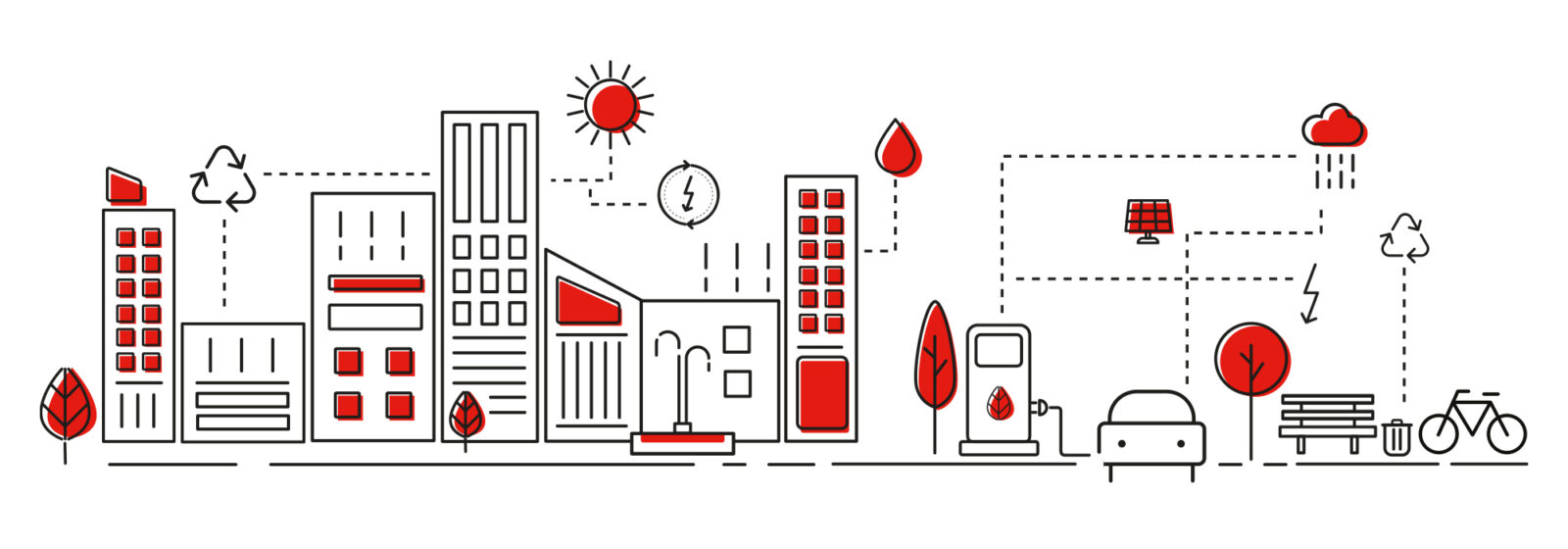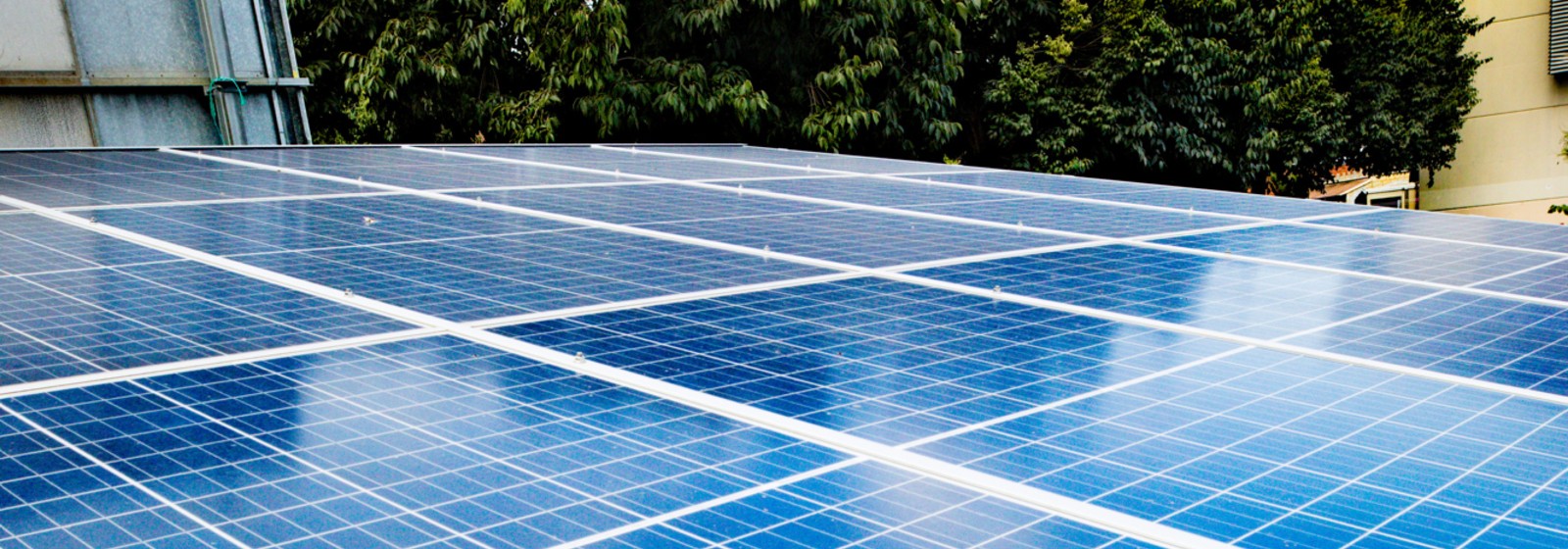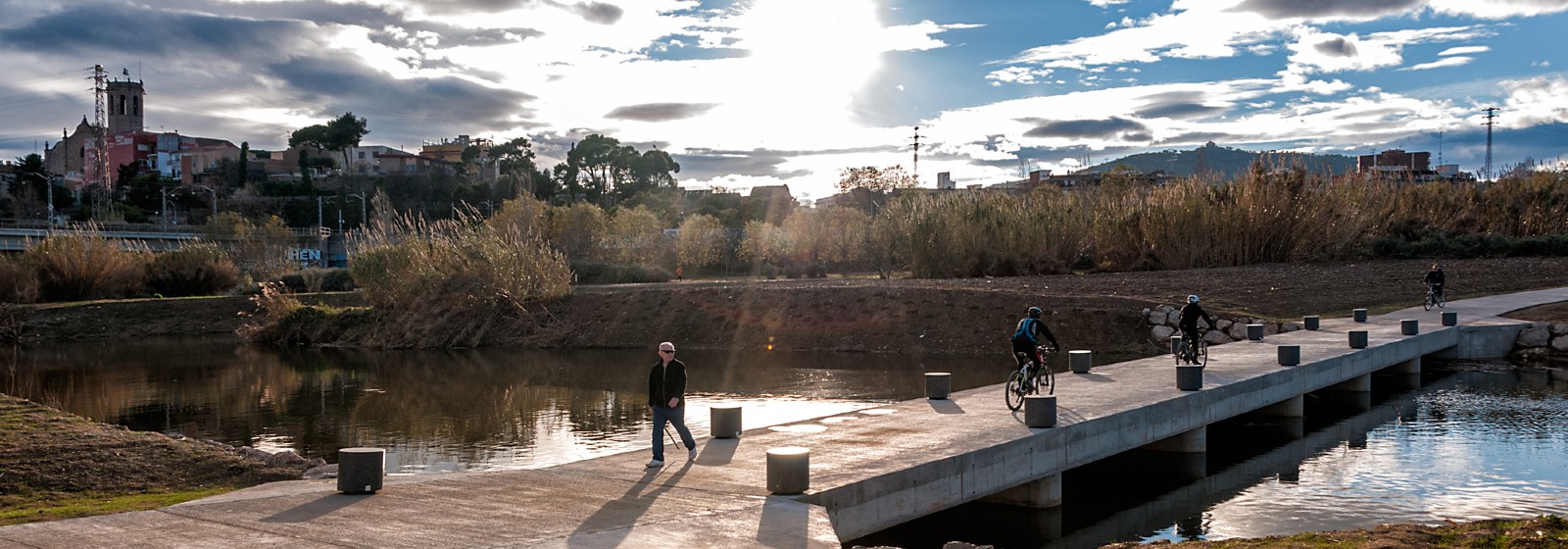
AMB’s recognition of the climate emergency
Impacts of the climate emergency and tools for acting as quickly as possible against climate change in the metropolitan territory
Presentation
As a supramunicipal local body, the AMB has a significant capacity for action and plays an essential role in leading and helping to build a supralocal response to climate change that encompasses the entire metropolitan area. Local town councils also play a fundamental role in local climate action and are unquestionably the driving force in ensuring that supramunicipal institutions take the appropriate local approach in response to the climate emergency.
The AMB’s recognition of a climate emergency is urgent and necessary. We must respond quickly and effectively with specific commitments to combat climate change.
8 principles of the AMB’s commitment
Transformative action that empowers us to act as a society in the context of climate emergency with responsibility, critical analysis and creativity to go beyond the limited impact of individual action.
Health encompasses physical, mental and social well-being. Therefore, mitigating the climate crisis and adapting to its impacts (such as heat waves or droughts) are inseparable from citizens’ health and well-being.
Fair treatment for all people with the aim of avoiding discrimination that could lead to inequalities in certain decisions and projects linked to the fight against climate change.
Transformation towards a sustainable economy by abandoning fossil fuels, lowering consumption and using renewable and local energy. A change is needed in the way energy is produced, managed and consumed.
More public transport, better connections among municipalities and improvements in the logistics system of goods.
Promotion of a circular model that respects the planet’s ecological limits and guarantees a decent life for everyone.
More jobs, more employment opportunities linked to the green economy (renewable energy, sustainable forest management, etc.) and better distribution of work.
Healthy food based on the consumption of seasonal, local and sustainably produced food.
Purpose of the Plan
Carbon neutrality of the metropolitan area
0 GHG emissions by 2050
Integration of energy sovereignty goals
Emissions neutrality in public buildings and lighting
Boosting renewable energies
Public solar energy systems with a generation capacity of 100 MWp by 2030
Energy efficiency and conservation
Lower public buildings and lighting consumption 50 % by 2030
Reduction of greenhouse gases
Lower GHG emissions 55 % by 2030 and be neutral by 2050
Adaptation to climate change
Preventive adaptation, adaptation local plans and climate shelters
Glossary
-
Adaptation to climate change
The adjustment of human or natural systems to the inevitable effects of climate change. The capacity to adapt to climate change, together with climate risk and climate sensitivity, are some of the factors that determine vulnerability. Climate change adaptation measures, along with climate change mitigation measures, are two of the cornerstones of the climate transition. -
Carbon footprint
The total amount of GHG emissions associated with the lifecycle of a person, a product, an industrial process, etc. It is the environmental impact used to measure the lifecycle of a product or service to gauge its contribution to the potential for global warming. -
Carbon neutrality or climate neutrality
A situation in which there is a zero balance between greenhouse gas emissions and their absorption through carbon sinks. -
Circular economy
An economic model based on the reuse, repair, remanufacture and recycling of materials and products which minimises the use of raw materials as an alternative to a linear model based on production, use and disposal. -
Climate action
A set of policies aimed at avoiding a global average temperature increase of more than 2 °C compared to pre-industrial times. -
Climate change
The natural changes in the planetary climate system, the interglacial cycles that occur every tens of thousands of years. It is not a useful term to refer to the current phenomenon, since change is a neutral-positive concept which does not reflect the direness and magnitude of the climate forcing caused by humans. -
Climate crisis
The dire environmental and economic impact of global warming. This is our current situation as a consequence of decades of increases in greenhouse gas emissions. It describes the current instability, and just like all crises (economic, political or social), if it isn’t solved it can worsen. -
Climate emergency
This indicates the seriousness of the current climate situation and the need for immediate action, with exceptional measures by public authorities (just as in health, security or humanitarian emergencies). The concept of climate emergency has been trivialised because it is used without linking it to urgent and exceptional measures. -
Climate justice
A set of principles that defend fair treatment for all people and all countries with the aim of avoiding any discrimination that may result from certain decisions and projects linked to the fight against climate change. -
Climate migrant
An environmental migrant who is forced to leave their usual place of residence due to the environmental degradation caused by climate change. Currently, the concept of climate migrant is not covered in any international law. -
Climate scenario
A future climate system forecast taking into account the different variables involved. There can be moderate or extreme scenarios according to the different analyses. -
CO2 equivalent
A magnitude that allows us to determine the potential global warming from greenhouse gases based on their carbon dioxide equivalence by applying the warming potentials for each gas.
-
Decarbonisation
The elimination of carbon from the atmosphere to stop global warming. It can refer to the decarbonisation of either human activities or economic processes. It consists in making a process or activity area lower its dependence on fossil fuels and greenhouse gas emissions, usually gradually. -
Deforestation
The act and effect of clearing an extensive area of forest. Much deforestation is caused by the expansion of intensive agriculture, urbanisation and forest fires. Deforestation causes forests to stop functioning as reservoirs and therefore to stop absorbing carbon dioxide. -
Desertification
The process whereby a desert is formed due to anthropogenic activity and the lack of precipitation. Desertification alters the water cycle, threatens the soil’s potential to produce food and biomass, prompts a loss in biodiversity and activates climate feedback mechanisms that affect important climate parameters. -
Diffuse emissions
The emissions corresponding to the activities not included in the EU Emissions Trading Scheme (non-EU ETS emissions) such as transport, waste, agriculture, services, energy and unregulated industry. -
Drought
A water deficit in which peoples’, animals’ and plants’ water needs cannot be met. Drought can be broken into meteorological droughts, agricultural droughts and hydrological droughts.
-
Ecosystem services
The benefits that an ecosystem brings to society which improve people’s health, economy and quality of life. An ecosystem service comes from the functions inherent to an ecosystem. There are four types of ecosystem services, according to their benefits: provisioning, regulating, cultural and supporting services. -
Emissions from the EU Emissions Trading Scheme (EU-ETS)
The EU Emissions Trading Scheme (EU-ETS) was implemented in the 25 EU member states on 1 January 2005. It focuses on the major industrial emitters responsible for almost half the EU’s CO2 emissions. The core of the regime is the common currency of exchange: emissions rights. A right authorises the holder to emit one tonne of CO2. -
Energy communities
These are groups of individuals, organisations, companies and public administrations that organise themselves to collectively solve different challenges posed by the energy transition based on local projects and the creation of social value as their main objective. -
Energy transition
The gradual abandonment of energy from fossil fuels in favour of energy from renewable sources. The energy transition is one of the Sustainable Development Goals of the United Nations’ 2030 Agenda. The energy transition is part of the climate transition as well as the ecological transition. -
Extreme weather phenomenon
An uncommon weather phenomenon or one that is unusual for that season in a given place. It is an extremely damaging weather event that occurs in a brief period of time and causes economic, social and environmental damage and harm. Examples include torrential downpours, floods, droughts, heatwaves, wind storms, storms at sea, etc. -
Flood
The submergence of an area usually not covered by water due to river overflow, reservoir flooding, extreme melting or a storm at sea.
-
Global warming
The gradual increase in the Earth’s average temperature due to the intensification of the greenhouse effect. There is scientific information (collected in the IPCC reports and elsewhere) showing that today’s global warming is being forced by the massive emission of greenhouse gases caused by human activity, especially since the Industrial Revolution. -
Greenhouse gases (GHG)
Greenhouse gases trap the Sun’s energy in the Earth’s atmosphere, which causes the overall temperature to increase (the way the transparent roof and walls of a greenhouse increase the temperature inside). The massive burning of fossil fuels (coal, oil and gas) causes large GHG emissions that are leading to rapid global warming. The main GHGs are carbon dioxide (CO2), methane (CH4) and nitrogen oxide (N2O). -
Green and blue infrastructure
A network of natural and semi-natural spaces and other strategically planned environmental elements designed and managed to offer a wide variety of ecosystem services. It includes green spaces (terrestrial ecosystems) and blue spaces (aquatic ecosystems) and other physical terrestrial elements (natural, rural and urban) and marine areas. -
Heat wave
A phenomenon in which the air temperature increases considerably during the day due to the invasion of a hot air mass. At present, heat waves are becoming more frequent, longer and more intense due to the effects of global warming. -
IPCC
Intergovernmental Panel On Climate Change. The United Nations’ group of climate change experts. -
Mitigation
Human intervention to reduce greenhouse gas emissions or to increase the capacity of sinks.
-
Ocean acidification
The continuous decrease in ocean pH by the addition of hydrogen ions due to the increased carbon dioxide in the atmosphere. This process runs parallel to other changes taking place in the oceans, such as the reduction in oxygen concentrations and changes in salinity. -
Tipping points
The turning points in climate change, the critical limits which will prompt natural processes with their own dynamics if exceeded, regardless of what we humans do. One of these tipping points is the temperature of global warming compared to the pre-industrial period 1880-1900. In general, it was believed that 2 °C of warming was a tipping point for the planetary climate system, but a 2018 IPCC report implicitly places this tipping point at 1.5 °C. -
Torrential downpour
This is an extremely strong, violent downpour usually associated with a storm and accompanied by lightning or hail, which can cause overflows, floods, torrential rain and sudden flooding.
-
Urban goods distribution (DUM)
The increase in the demand for urban goods transport is due to the concentration of the majority of the population in urban areas and the distribution of much of the production in these densely populated areas. Efficient DUM is needed because the relative distances of this type of activity have increased considerably over the past few years. -
Urban heat island
An urban area with a higher ambient temperature than the surrounding areas, mainly due to the greater absorption of solar radiation by the materials of the buildings, roads and other infrastructures. The effect caused in urban heat islands is intensifying due to global warming and climate change. -
Urban metabolism
The flow of materials and energy on which urban centres depend. Urban metabolism includes the organisation of technical services, energy rehabilitation, green and blue infrastructure, sustainability strategies in existing urban fabrics, the adaptation of planning to the risks and vulnerabilities of climate change and the urban integration of the energy generation model. The energy, material and information flows that define a city, as well as the impacts caused by waste, are all associated with the urban metabolism. -
Urban resilience (to climate change)
The capacity of a socio-ecological system (humanised environments, both urban and rural) to withstand and regain stability in view of the effects of climate change. -
Vulnerability
A condition resulting from physical, social, economic and environmental factors or processes that predispose the elements exposed to a natural phenomenon to experience harmful effects.





